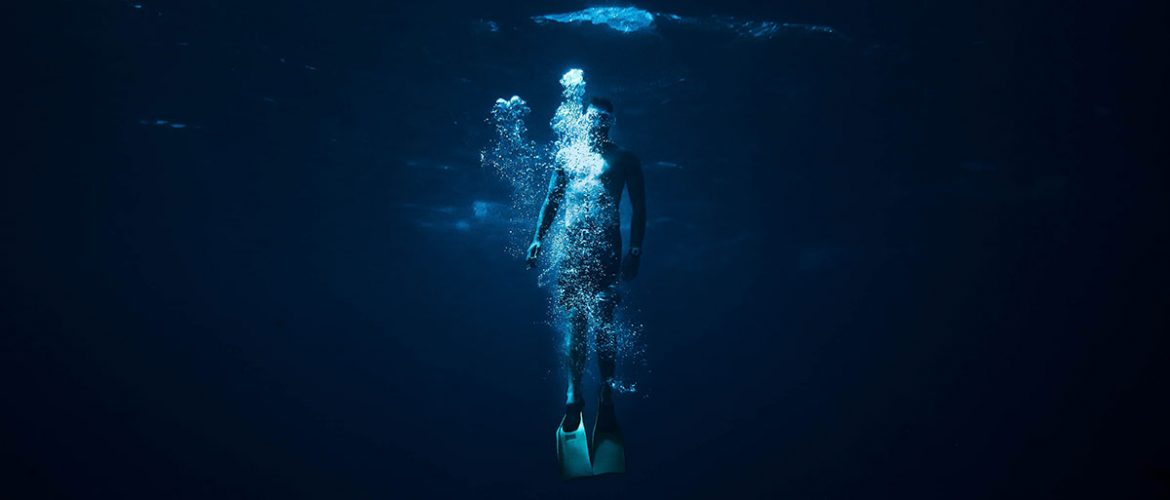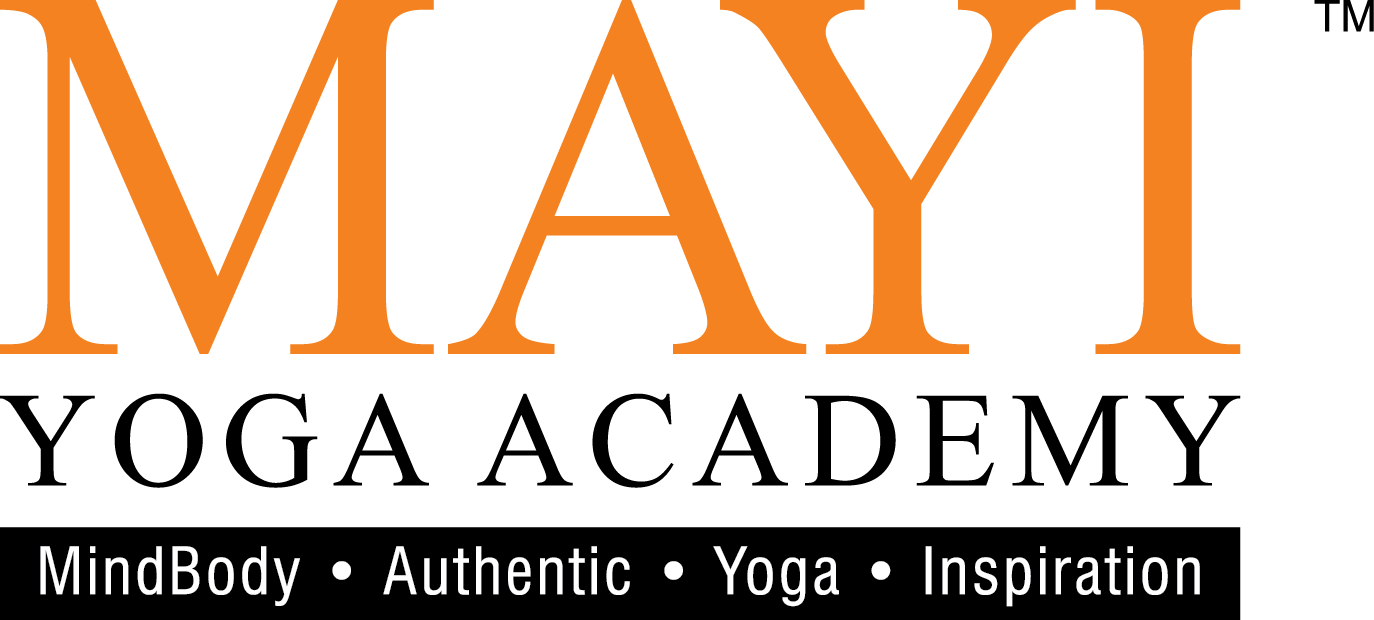The Wonderful Combination of Yoga and Freediving
- July 14, 2019
- Posted by: admin
- Category: Articles by Practitioners,

By Adelena Gustafsson
What is Freediving? Freediving is the art of diving underwater in one breath. One dives by taking in a deep breath, holding, diving and only taking a new breath as one resurfaces. It is an ancient technique of diving underwater without the use of any extra breathing apparatus like in Scuba diving.
Freediving has been around for thousands of years and only recently became popular again. It is commonly used by island fishermen when catching fish, and diving for pearls and sponges. It was even used during the war to aid the military campaigns. A more modern type of freediving is the competitive one, where freedivers from around the world meet to compete in various types of disciplines such as depth competitions and static (where one holds the breath with face in the water). The sport gained limelight in 1976, when French freediving pioneer Jacques Mayol became the first human to reach a depth of 100 metres.
It can be a daunting thought, that you are diving at Scuba depth with only your lungs and one breath, but you will be surprised by what a human body can achieve, especially when one is calm in mind and body.
As you hold your breath and dive deeper, the body adapts and goes into an automatic shift called bradycardia. This is when the shift of blood to the lungs and heart slows down the heart rate. This is a Mammalian Dive Reflex, which we humans have in common with sea lions, seals and otters.
Another word for Freediving is Apnea (a translation from the Greek word ‘without air’) and it is believed that Apnea training gives amazing benefits to one’s health. Here are a few key advantages of Apnea training:
- Helps one control the Sympathetic Nervous System and improves the mind to control the body’s subconscious sympathetic nervous system.
- Helps build hypoxia tolerance, which helps to maintain normal mental function in situations where the oxygen level is low, such as deep sea diving, mountain climbing at high altitudes, and in case of high volume of smoke, such as a fire in the area.
- Improved lung functions and capabilities.
- Helps in building tolerance with hypercapnia, or high CO2 tolerance.
A research published on the “US National Library of Medicine, National Institutes of Health” website titled ‘Mind-body relationships in elite apnea divers during breath holding: a study of autonomic responses to acute hypoxemia’ by Frontiers of Neuroengineering“, stated that meditation and Pranayama also train the mind and body for longer and safer breath hold (Cysarz and Büssing, 2005). They found that it modulates the emotional processing (Sobolewski et al., 2011) and contributes to a better air hunger control; this is considered to be a dominant and primitive sensation with a strong emotional component that alerts the organism for a risk to survival (Brannan et al., 2001; Liotti et al., 2001). It is then reasonable to hypothesise that the use of meditation, combined with physical training, can modulate psychophysiological responses during breath hold, extending the breath hold time and making the need for air less sensitive.
Pranayama - I'm glad I found it
I have been Scuba diving for about 10 years now, but started freediving early last year, and fell in love with it as it gives me the freedom to move without the weight of a tank on my back and other bulky equipment on my body. Although I still enjoy Scuba, freediving comes with a sense of peacefulness as you are not bothered by the bubbles as during Scuba; though when I started freediving, I was dealing with some personal issues in life, which were holding me back during breath holds and descents. I had fears and every time I descended deeper, I would occasionally freak out a little and turn around and head back towards the surface. I really wanted to go deeper or even hold my breath for just a little longer, but I would find that my mind would disobey and keep me from going further. A few months later, I began to practice yoga more frequently and not long after I decided to take the International Yoga Instructor Course (IYIC) and Pranayama Instructor Course with MAYI Yoga Academy. This was my wisest decision ever as it not only helped me to work on myself, it prepared me for so much more.
As I completed my foundation level for the IYIC, I realised how much the breathing techniques helped me in daily life too. I remembered the basic techniques my freediving instructor, Cesc, had taught us such as Kapalabhati (active exhaling), Yogic breathing (deep breathing/sectional breathing techniques) and Uddiyana bandha (abdominal lock).
These techniques didn’t really make sense to me until I practised more, and the reasons and techniques were explained more during my yoga training. Up till then I also didn’t realise how beneficial it was to practice these techniques, I always just thought it was meant to be practiced in freediving though during the time of my freediving course I did it with a friend who was already a yoga instructor and from the first day in the water was already performing excellently.

I have not had the chance to practice much more freediving since then as I have been living in the city and have not been near deep water, but this gave me the opportunity to practise more on my breathing techniques and work on my disobeying mind. Recently, I did manage a trip south to Tioman Island and was invited on a freediving trip day out to one of the islands, Pulau Labas. This island had amazing swim throughs under rock formations all around. I was excited and a little nervous as I had not done any freediving in a while, but I found that after the first dive through I was comfortable and got to enjoy most of the swim-throughs guided by my friend and freediving instructor, Kat. I also found that my mind was calm and able to hold my breathing a lot longer than I could have ever done before. In the morning before the trip, I taught a 90-minute class with some deep breathing techniques and on the boat on the way there I practised Kapalabhati. We were out for more than two hours and even after swimming through currents I was not tired.
Pranayama has been one of my main focus since I started my yoga instructor’s training and I have to say that I am glad I found it when I did. By practising simple basic techniques of Kapalabhati and Yogic breathing every day, I was able to reap the advantages and hold my breath longer, and at the same time, keep my mind at ease. Imagine if you could learn more Pranayama techniques. There are so many different types of Pranayama techniques and the advantages are endless. Practicing yoga asanas also help my body prepare and build the strength and stamina for the dive. After a day of diving, Yoga Nidra also helps to calm the mind and relax the body.
Here are some of the techniques used not just for everyday, but specifically complimentary to freediving;
- Kapalabhati
- Yogic breathing
- Nadi Shodhana
- Ratio breathing (breathing with counts at ratio such as Inhale 1: Hold 2: Exhale 2: Hold 1 or higher for more advanced practices)
- Uddiyana bandha (abdominal lock while holding the breath out, a good exercise for the lungs, also massages the internal organs)
- Plavini (packing breath: Breathing in as much oxygen as possible — an exercise to keep the breath in for longer. Excellent practice for diving in one breath. Though mostly done by advanced practitioners, but can be done with guidance from an experienced instructor or Master)
If you have not tried freediving but love to be in water, I highly recommend giving it a go. If you had tried it but was unsure about your breathing capabilities then I highly recommend you to join us on the upcoming freediving-cum-yoga retreat, which we will be hosting in October to learn proper yoga techniques, which will be beneficial for your freediving session. For queries about the retreat, write to yoga@mayiyogaacademy.com.
